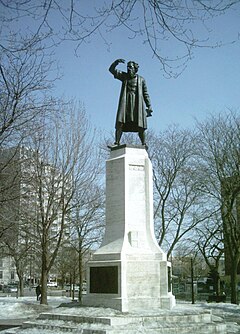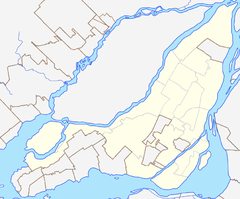Cabot Square, Montreal
| Cabot Square | |
|---|---|
| French: square Cabot | |

The monument to John Cabot in Cabot Square.
|
|
| Type | Town square |
| Location | Shaughnessy Village, Ville-Marie Montreal, Quebec, Canada |
| Coordinates | 45°29′22″N 73°35′01″W / 45.489444°N 73.583611°WCoordinates: 45°29′22″N 73°35′01″W / 45.489444°N 73.583611°W |
| Area | 0.61 hectares (1.5 acres) |
| Created | 1870 |
| Operated by | City of Montreal |
| Status | Open all year |
Cabot Square (French: Square Cabot) is an urban square in Montreal, Quebec, Canada between the former Montreal Forum and the former Montreal Children's Hospital. The square is located in the Shaughnessy Village neighbourhood, an area which has been recently re-dubbed the Quartier des Grands Jardins and has been slated for redevelopment.
It is one of three statues of John Cabot in Canada; the others are found at Confederation Building in St. John's, NF and Cape Bonavista. Two other statues of Cabot are both found in Bristol, England (Council House, Bristol and Bristol Harbour).
The square opened in 1870 and the monument to Italian-born English explorer John Cabot, by Italian sculptor Guido Casini (1892–1956), was unveiled on May 25, 1935.
It takes the form of an urban green space and may otherwise be described as a park, though its status as a public square means there is a generally unenforceable curfew. It is also the location of the STM's Atwater Terminus, with several bus routes connecting to the Métro station located nearby. A shelter and access point to the Underground City, Montreal (Réso) can be found at the Northwestern corner of the square, near a seldom-used kiosk which was once a small bistro.
The square is unusual by Montréal standards in that it has multiple short fences and hedges employed to direct traffic and prevent too much through-traffic from ruining the grass, a design concept that hasn't entirely worked out. The square is well-used but generally by a population of homeless or otherwise impoverished people. It remains a popular destination for members of those groups wishing to drink alcohol outdoors. For this reason there is generally a visible police and public security presence in the area.
...
Wikipedia

